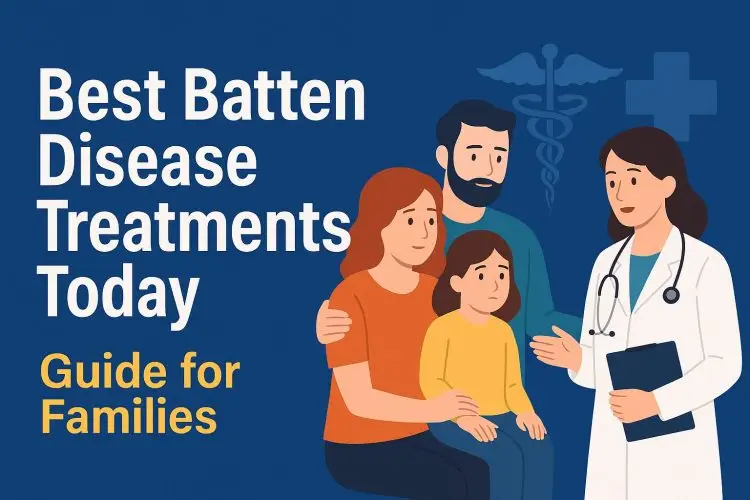Recognizing the Enemy: Identifying the Signs of Caregiver Burnout

Table of Contents
As a caregiver for a loved one with Batten disease, you are a warrior. You are a nurse, a therapist, a pharmacist, a scheduler, and a fierce advocate, all wrapped into one. But even warriors have their limits. The relentless physical and emotional demands of this role can lead to a state of profound exhaustion known as caregiver burnout. This is not a sign of weakness or a lack of love; it is a predictable human response to prolonged, overwhelming stress. Recognizing its signs is the first, most critical step toward protecting yourself and ensuring you can continue to provide the best care for your loved one.
The symptoms of burnout can be insidious. They may start as simple fatigue but can escalate to emotional numbness, a feeling of being constantly on edge, or deep-seated irritability. You might experience changes in your sleep patterns, a weakened immune system leading to frequent illness, social withdrawal from friends and activities you once enjoyed, and a pervasive sense of hopelessness. Ignoring these signs doesn’t make them go away; it allows them to take deeper root, jeopardizing your own health and well-being.
The Unique Burden of Batten Caregiving: Acknowledging Chronic Sorrow and Anticipatory Grief
The caregiver stress associated with Batten disease is unique because it is intertwined with complex layers of grief. Unlike an acute illness where the goal is recovery, Batten disease involves a continuous process of loss. This gives rise to two specific emotional states that define the caregiver experience: chronic sorrow and anticipatory grief.
Understanding and naming these feelings is crucial for processing them. They are not stages to be moved through, but constant companions on this journey. Acknowledging their presence can reduce their power and help you realize that you are not alone in these incredibly difficult emotions, a common thread among families battling progressive diseases.
Understanding Chronic Sorrow
Chronic sorrow is a cyclical, pervasive sadness that re-emerges at different milestones and moments throughout a caregiver’s life. It is the grief that resurfaces when you see other children reaching milestones your child never will, or when you are confronted with a new loss of function. It is not the same as depression; it is a normal, recurring grief response to a tragic and irreversible situation.
Allowing yourself to feel this sorrow, without judgment, is a form of emotional self-care. It’s the acknowledgement that your loss is real and ongoing. Suppressing it often leads to other issues, such as anger or anxiety. Finding healthy outlets to express this sorrow, whether through talking with a trusted friend, journaling, or speaking with a therapist, is essential for long-term coping.
Navigating Anticipatory Grief
Anticipatory grief is the process of grieving a loss that has not yet fully occurred. You are grieving the future you expected to have with your child, the abilities they have yet to lose, and their life itself. This is an incredibly painful and confusing state, as you are simultaneously providing intensive, life-sustaining care while also grieving the person you are caring for.
This type of grief can make it difficult to find joy in the present moment. It is the constant “what if” and “what’s next” that occupies your mind. Recognizing anticipatory grief allows you to be more compassionate with yourself. It helps explain why you might feel so exhausted and sad, even on a “good day.” It is a testament to the deep love you have for your child.
Proactive Strategies for Self-Preservation and Building Resilience
Preventing burnout requires a conscious and deliberate shift in mindset: your well-being is not a luxury, it is a prerequisite for being a good caregiver. This means building proactive self-care strategies into your life, no matter how impossible that may seem. These strategies are not about grand gestures, but about small, sustainable acts of self-preservation.
Building caregiver resilience is an active process. It involves identifying your stressors, acknowledging your limits, and strategically implementing support systems that can help carry the load. It is about learning to put on your own oxygen mask first.
The Lifeline of Respite Care
The single most important strategy for preventing burnout is utilizing respite care. Respite is a short period of rest or relief from your caregiving duties. It can range from a few hours a week provided by a trusted family member or a qualified home health aide, to a longer stay at a specialized facility. The goal is to give you a genuine break, allowing you to sleep, attend your own appointments, or simply do something that brings you a moment of peace.
Many families feel guilty about using respite care, as if they are abandoning their child. It is vital to reframe this thinking. Respite care is a gift to your child, as it allows their primary caregiver to recharge and return with renewed energy and patience. Many state Medicaid waiver programs or insurance plans offer provisions for respite services.
Micro Self-Care: Finding Pockets of Peace in the Chaos
For many caregivers, the idea of taking a full day off is laughable. This is where “micro self-care” becomes critical. It’s about finding small, 5- to 15-minute pockets of time throughout the day to decompress. This could be listening to a favorite album through headphones while your child is resting, stepping outside for five minutes of fresh air, practicing deep breathing exercises, or watching a short, funny video on your phone.
These small acts may not seem like much, but they are crucial for regulating your nervous system and breaking the cycle of constant stress. They are small deposits into your own depleted energy bank, helping you get through the next hour, and the next day.
Building Your Fortress of Support
You cannot do this alone. A key to avoiding burnout is to build a fortress of support around you. This includes both informal and formal support systems that can help with the practical and emotional burdens of caregiving for a child with Batten Disease.
This fortress is your defense against isolation, exhaustion, and despair. It requires you to be vulnerable and learn to accept help, which can be one of the hardest things for a caregiver to do.
Leaning on Your Community and Professional Help
Learn to be specific when people offer to help. Instead of saying “I’m fine,” say “Could you pick up some groceries for me?” or “Could you sit with my child for an hour so I can take a shower?” People often want to help but don’t know how. Giving them a concrete task is a gift to both of you.
Do not hesitate to seek professional mental health support for yourself. A therapist who understands chronic illness and grief can provide you with invaluable coping tools and a confidential space to process your feelings. Your own well-being is not secondary; it is central to the entire caregiving mission. Information on health and wellness can often be found on trusted portals like medicationsdrugs.com.
The Power of Peer Support
Perhaps the most potent antidote to the isolation of caregiving is connecting with other parents on the same journey. Online forums and in-person support groups, particularly those run by organizations like the Batten Disease Support and Research Association (BDSRA), are lifelines. In these groups, you do not have to explain the acronyms, the medications, or the grief.
These are your people. They understand your darkest fears and your smallest victories. Sharing your story with them, and hearing theirs, validates your experience and reminds you that you are part of a fierce, resilient, and loving community. This peer support is often the fuel that makes it possible to keep going.
References
For resources on caregiver support and mental health, consult the Caregiver Action Network and the National Alliance on Mental Illness (NAMI). Your hospital’s social work department can also connect you with local respite care and support group options.




